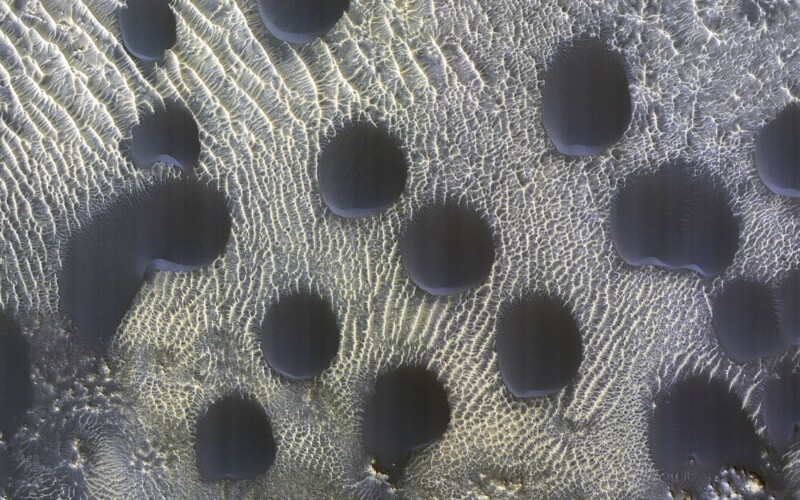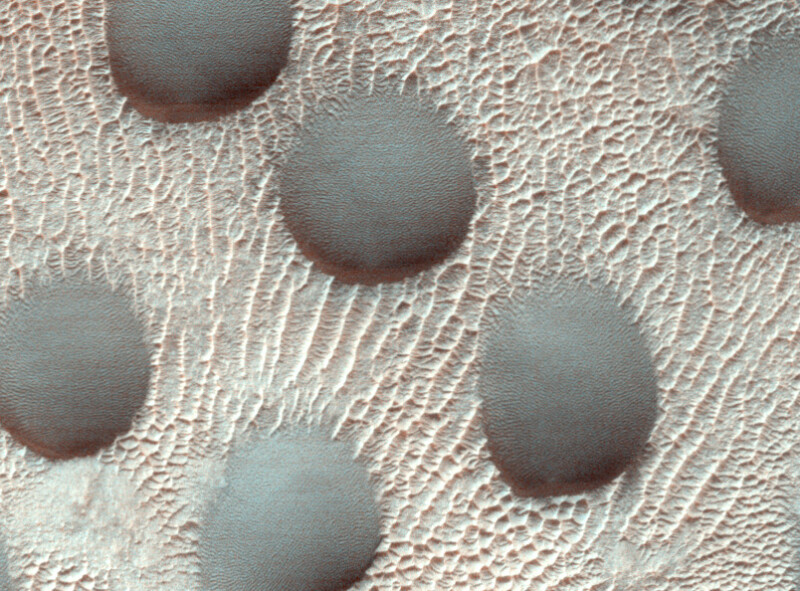NASA Release Photos of Strange Circular Sands Dunes on Mars

Unusual sand dunes have been spotted on Mars. Almost perfectly circular, planetary scientists have been left baffled as to what they are.
The High Resolution Imaging Science Experiment (HiRise) captured the images on November 22, 2022, as part of a mission to monitor how frost disappears in late winter.
The University of Arizona, which operates HiRise, pointed out in a statement that the odd dunes are slightly asymmetrical, with steep slip faces on the south ends. “This indicates that sand generally moves to the south, but the winds may be variable.”
The HiRise camera is attached to the Mars Reconnaissance Orbiter (MRO) spacecraft and takes pictures of vast areas of Martian terrain. The MRO was at an altitude of roughly 185 miles (300 kilometers) above the Red Planet and the projected scale of the sand dune photos is 9.8 inches (25 centimeters) per pixel.
While the sand dunes did not have any frost on them, scientists released a picture taken previously that shows what they look like while still frosty.

As noted by Space, the circular sand dunes are one of 60 sites being monitored by HiRise. The camera repeatedly photographs sand dunes over the course of a Martian year (which lasts 687 Earth days) and it gives planetary scientists the opportunity to detect the direction and speeds of the dunes’ movement. So far, their studies have revealed that Martian sand dunes move at a rate of 3.3 feet (one meter) per Martian year.
![]()
Sand dunes on Mars come in all different shapes and sizes and by researching them terrestrial scientists learn about the weather conditions on Earth’s neighbor. The movement of dunes indicates how winds impact the planet’s surface and the direction they take on Mars’ surface.
Earlier this week, PetaPixel reported on NASA’s Curiosity Mars rover which captured the first-ever images of sun rays on the planet.
Image credits:Images courtesy of NASA/JPL-Caltech/University of Arizona.